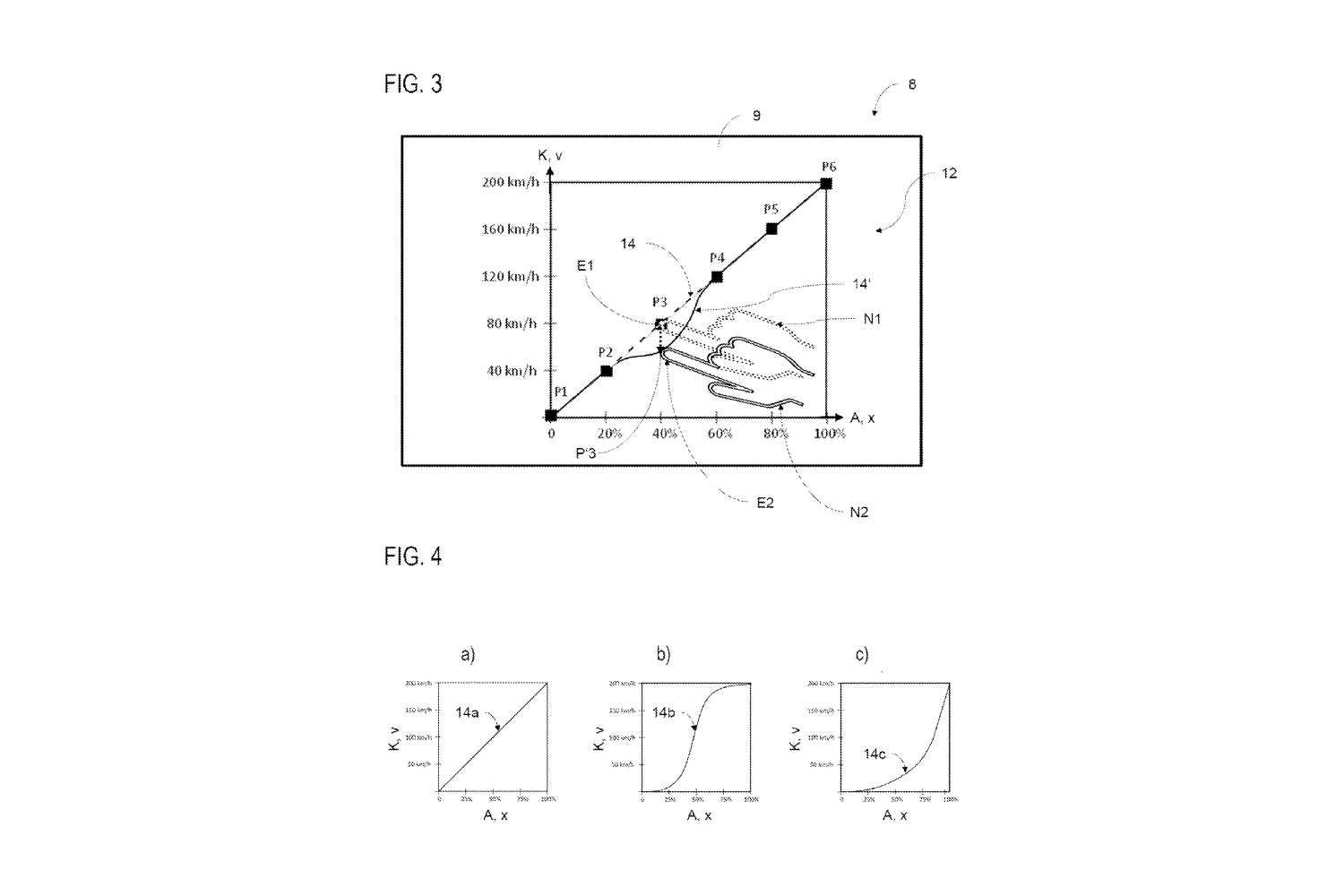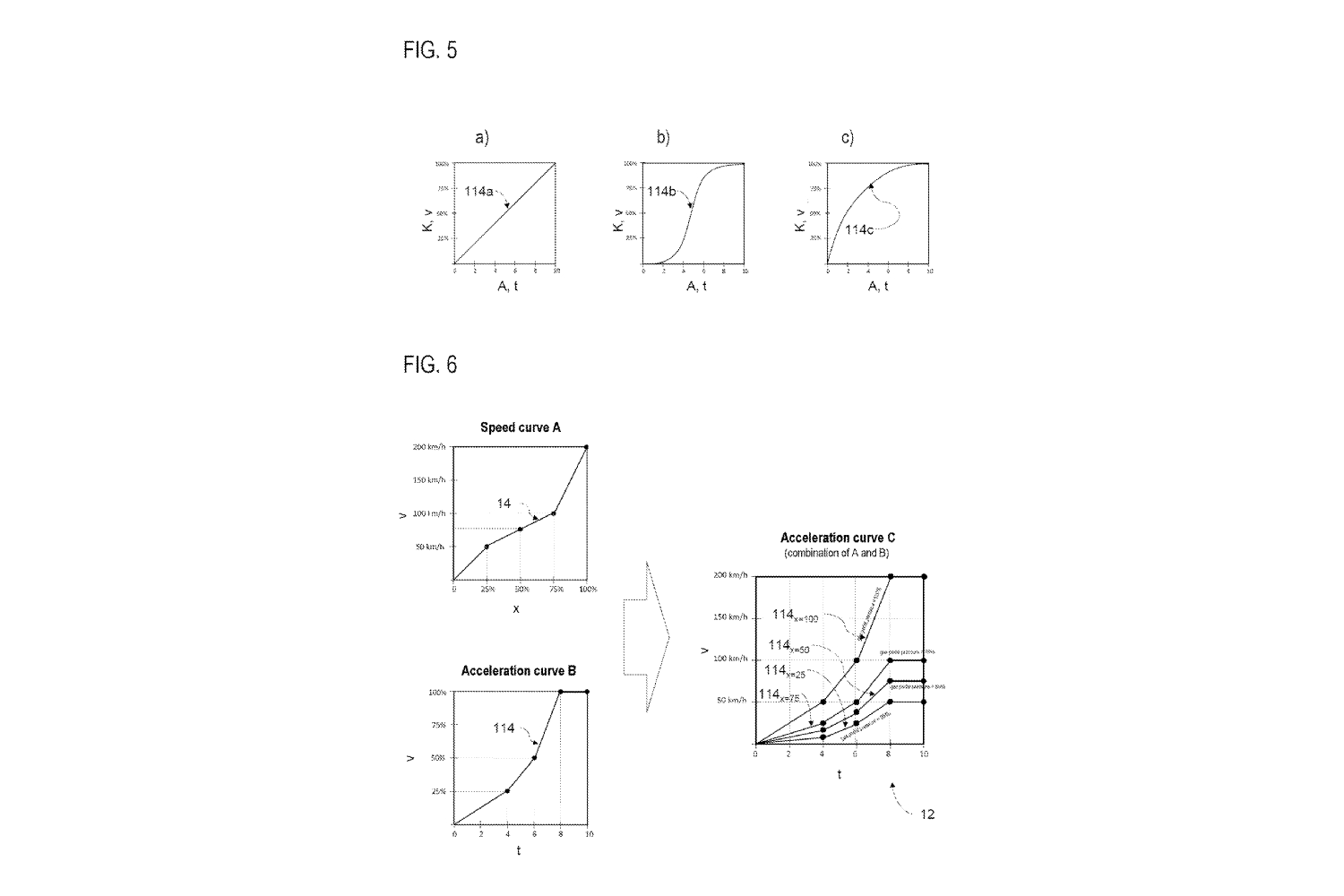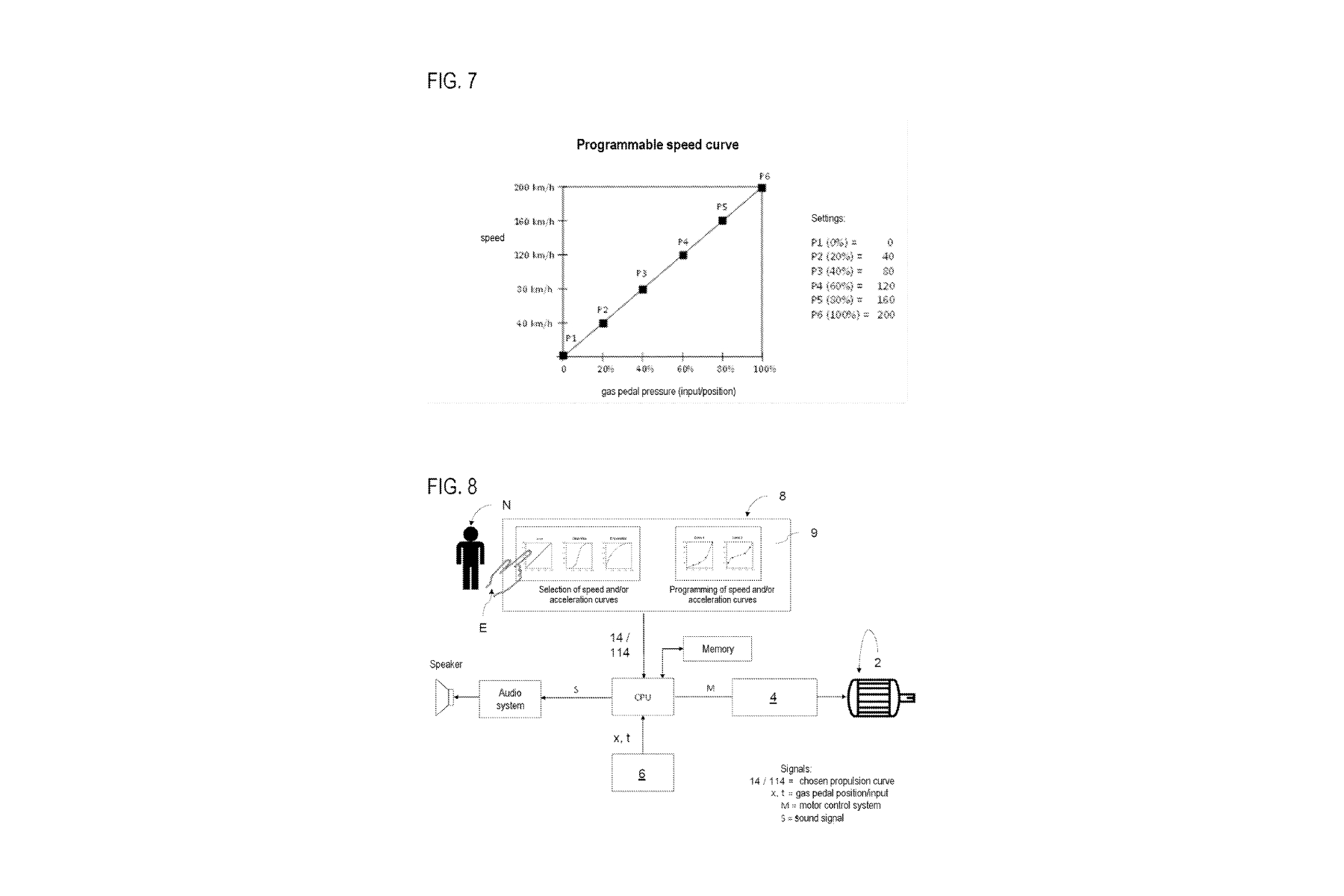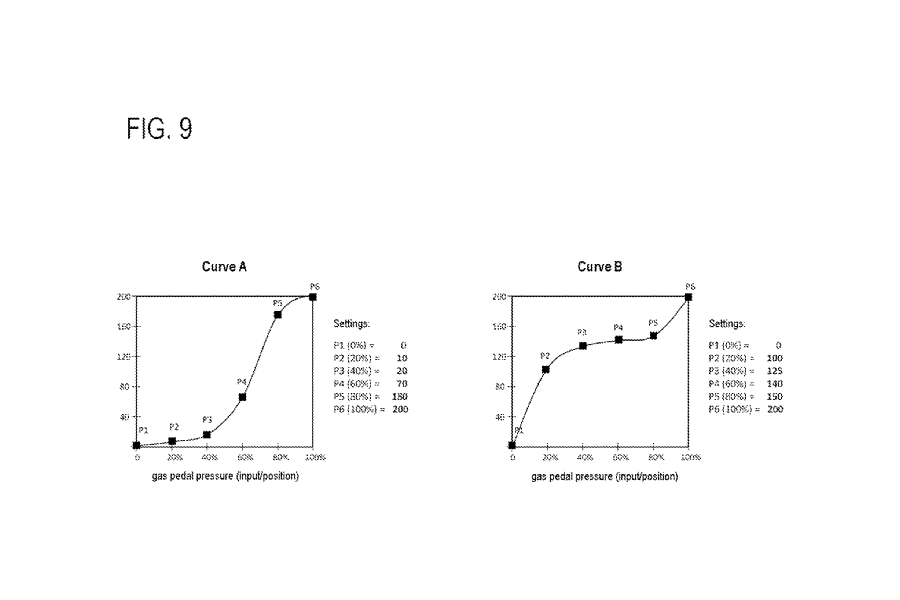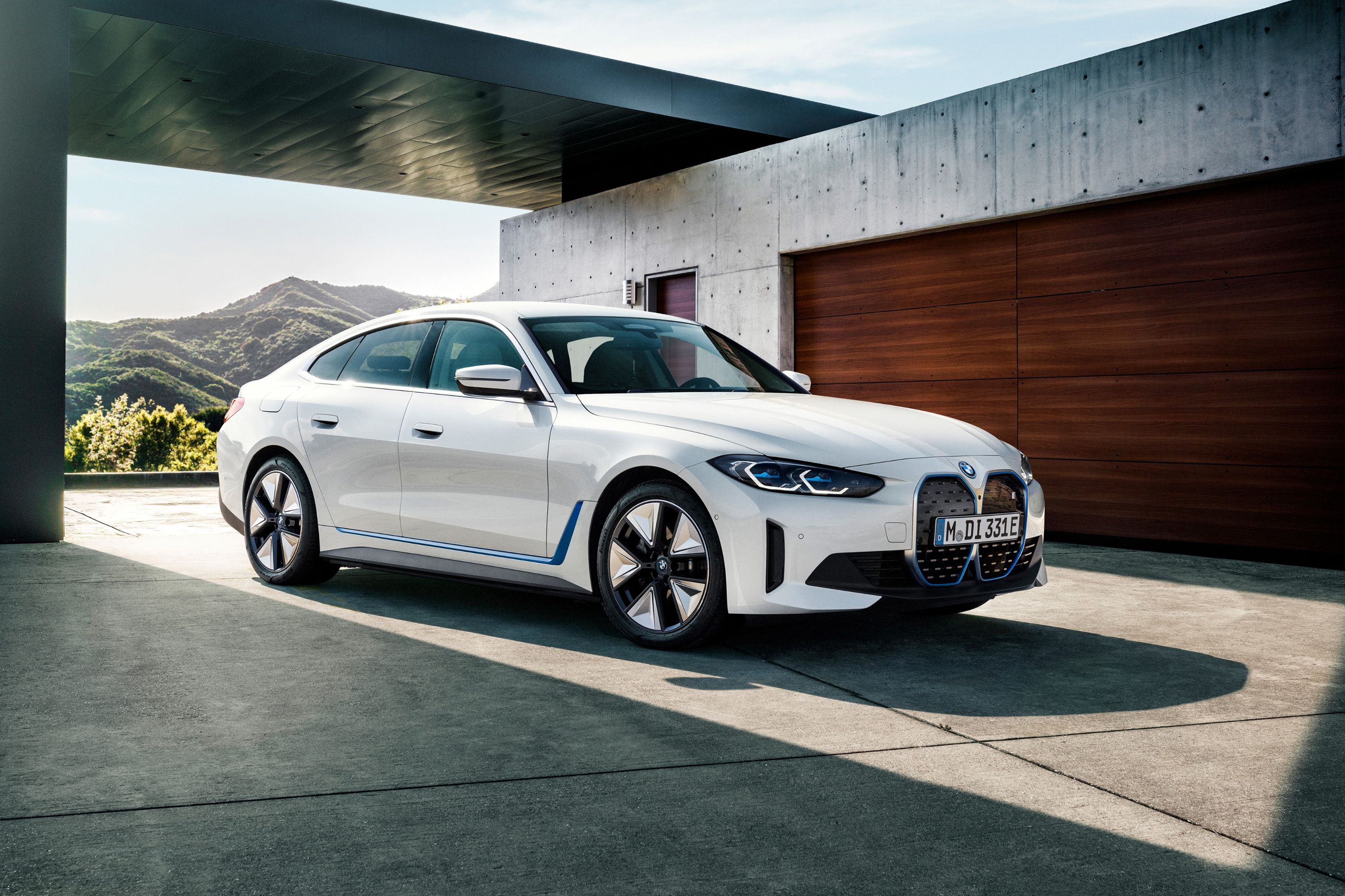
BMW may have solved the problem of electric performance cars that feel dull to drive, thanks to the massive wave of unrelenting torque. In a patent filed with the United States Patent and Trademark Office, discovered by CarBuzz, BMW proposes a system that would let drivers tailor various drivetrain properties, including throttle mapping and torque delivery, going so far as allowing you to customize your car's acceleration curve.
This new system goes beyond just predetermined driving modes as you'd find in any current car, where Sport mode sharpens throttle mapping by 20-30% while Eco mode dulls responses by a similar amount. Instead, BMW envisions a graph where you can create custom torque curves and throttle maps that correlate to your speed, where each point in the curve can be tailored as you would your sound system via an audio equalizer.
How It Works
Because electric motors don't rely upon momentum in the same way as combustion engines, they can be modulated by various programming protocols, creating infinitely variable conditions. BMW thinks the concept of predetermined driving modes is boring in the context of an EV.
The basic principle of the design hinges around two graphs or curves: a speed curve and an acceleration curve. Both directly relate to the throttle, or gas pedal, position.
In the primary speed curve, the vehicle's speed is directly correlated to the position of the throttle. As EVs primarily rely on single-speed direct drive transmissions, you can set a speed based on the position of the gas pedal - or the use of a joystick-style control, as per the patent. You can choose from presets with a linear map, a curved map, or an exponential graph and tailor an exact speed to a certain input.
So at 10% throttle use, you can always travel at 20 mph, while at 50% throttle, the car will drive at an exact speed of 80 mph (or whatever other speed you select).
The acceleration curve is much more like the standard throttle map we're used to, where throttle input correlates to how much more torque is applied. Prod the throttle 80% of the way down, and you prompt 80% acceleration, building speed continuously rather than capping speed based on the throttle pedal position.
Both of these curves can be tailored independently through inputs on the touchscreen, where a user can drag certain points of these graphs up or down. In this way, you can choose to limit the car's top speed using the speed curve or limit how strong the acceleration is at full throttle. Likewise, you can set the throttle to be very twitchy at low inputs and stable at high inputs, or vice versa - smooth at the top of its travel and sharp under heavy load.
Curves That Act Independently Or In Tandem
These curves can act independently or be combined to create an infinite array of throttle maps. If, for instance, you map the speed curve in a particular way where 10% throttle increments result in 10 mph speed gains, you can always know how fast the car will go based on your throttle position. 50% throttle, for example, would result in a steady speed of 50 mph in this example. But you can then combine this with an aggressive acceleration curve. Push the pedal for 0-50% slowly, and the car will gradually accelerate to 50 mph. Go from 0-50% throttle quickly, however, and the car will accelerate to 50 mph rapidly and then stay there. Alternatively, if you have a hyper-aggressive acceleration map, the car will accelerate rapidly to correlate with your throttle position.
Compounding the technology further, the computer systems will be able to read how long your throttle inputs have been in a steady state and adjust the acceleration curve. If you've been traveling at 60 mph with the throttle at 60% for the last four seconds, you're likely traveling on a freeway and aren't going to try to accelerate abruptly. So even if you have a sharp acceleration curve active, the system will dull the initial responses to smooth out the drive.
But you are fully in control of every one of these graphs, so you can decide how the car responds to your inputs. Like a car with a hair-trigger throttle? You can have it. Want something that accelerates smoothly for easy traffic driving? You've got it.
The sounds of the car - like the Hans Zimmer-developed soundscapes in the BMW i7 - will also adjust to these maps, so you can use auditory inputs to help you drive the car using your senses.
Making EVs Feel More Like ICE Performance Cars
While there are multiple benefits of this system, BMW specifically envisions it being used for enthusiastic driving. The patent documents say, "Use can be made with the invention of the whole spectrum of possible acceleration curves. The curve (shapes) can have an emotional character and delight the vehicle user."
Basically, you can tailor the driving experience to provide excitement through a building torque curve rather than the on/off mentality most EV manufacturers use. Instead of linear acceleration - which is fun at first but wears off as a novelty very quickly - you can have exponential acceleration curves that let power and speed build proportionately to a number of inputs. Using this, your EV can mimic the behavior of an ICE-powered car - and you can choose a graph that mimics the feel of natural aspiration, turbocharging, or even supercharging.
The direct correlation between speed and throttle position is also helpful when driving on a track. BMW M boss, Frank van Meel, told CarBuzz last year that one of the toughest elements of driving an electric M car on track would be that drivers could not rely on sound and knowing what gear they are in to determine their speed in corners accurately. But with this system, you can judge your speed more accurately based on your pedal position.
By combining this sport of methodology with other EV-related patents like an active differential for electric M cars, BMW will make driving an EV more involving, adding layers of interaction that make driving an EV exciting. As exciting as a combustion M car like the BMW M2? Perhaps not, but we can't say for sure until that day arrives, and when it does, it'll likely be behind the wheel of the 1,300-hp electric M3 BMW is developing.
Massive Safety Benefits Too
But in addition to the enjoyable benefits for driving enthusiasts, there are also safety benefits. Parents, for example, can limit the top speed of their child's car or even set and lock a more gradual acceleration profile, preventing rapid acceleration that may prompt a loss of control.
A big concern with EVs that so easily put hundreds of horsepower in the hands of novice drivers for just $30,000 is that these cars have too much power for the ordinary driver, and the on/off way in which they are capable of delivering this power means that inexperienced drivers are at risk of hurting themselves and others around them by not knowing how to modulate throttle inputs correctly.
By programming a so-called 'lazy' acceleration map and pairing this with speed correlating to throttle position, 1,000-hp EVs could be as docile to drive as a BMW X1.
BMW will also make sure that the customized maps do not allow sudden changes that are too vicious, adding another safety net.

